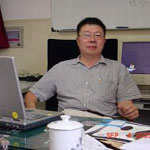-
35浏览
-
0点赞
-
0收藏
-
0分享
-
60下载
-
0评论
-
引用
期刊论文
The Role of Cis-Regulatory Motifs and Genetical Control of Expression in the Divergence of Yeast Duplicate Genes
Mol. Biol. Evol. 24 (11): 2556-2565. 2007,-0001,():
Expression divergence of duplicate genes is widely believed to be important for their retention and evolution of new function, although the mechanism that determines their expression divergence remains unclear. We use a genetical genomics approach to explore divergence in genetical control of yeast duplicate genes created by a whole-genome duplication that occurred about 100MYA and those with a younger duplication age. The analysis reveals that duplicate genes have a significantly higher probability of sharing common genetic control than pairs of singleton genes. The expression quantitative trait loci (eQTLs) have diverged completely for a high proportion of duplicate pairs, whereas a substantially larger proportion of duplicates share common regulatory motifs after 100 Myr of divergent evolution. The similarity in both genetical control and cis motif structure for a duplicate pair is a reflection of its evolutionary age. This study reveals that up to 20% of variation in expression between ancient duplicate gene pairs in the yeast genome can be explained by both cis motif divergence (8%) and by trans eQTL divergence (10%). Initially, divergence in all 3 aspects of cis motif structure, trans-genetical control, and expression evolves coordinately with the coding sequence divergence of both young and old duplicate pairs. These findings highlight the importance of divergence in both cis motif structure and trans-genetical control in the diverse set of mechanisms underlying the expression divergence of yeast duplicate genes.
【免责声明】以下全部内容由[罗泽伟]上传于[2010年11月29日 14时28分27秒],版权归原创者所有。本文仅代表作者本人观点,与本网站无关。本网站对文中陈述、观点判断保持中立,不对所包含内容的准确性、可靠性或完整性提供任何明示或暗示的保证。请读者仅作参考,并请自行承担全部责任。
本学者其他成果
同领域成果

 提示
提示

